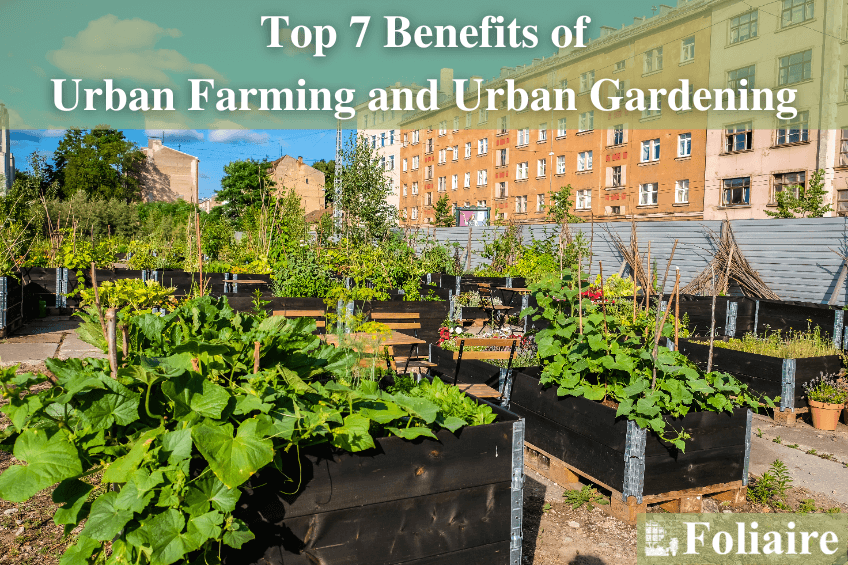An Unbiased View of City Blooming
An Unbiased View of City Blooming
Blog Article
How City Blooming can Save You Time, Stress, and Money.
Table of Contents5 Easy Facts About City Blooming ExplainedNot known Details About City Blooming How City Blooming can Save You Time, Stress, and Money.See This Report on City BloomingSome Known Questions About City Blooming.
Intrigued in growing food for sale in the City of Chicago? Below is a listing of often asked inquiries concerning the policies and guidelines that farmers ought to think about when preparing an urban agriculture task.
The zoning amendment does not customize any other codes managing composting, building authorizations, purchasing or leasing City possessed home, company licenses or environmental contamination. There are existing codes that regulate these concerns and they stay completely effect and may apply to your job. Area yards are normally had or managed by public entities, civic companies or community-based companies and preserved by volunteers.
Urban ranches grow food that is planned to be sold, either on a not-for-profit or for-profit basis. Due to their commercial function, city farms require a company permit.
Some Known Facts About City Blooming.
The amount of compost product can not exceed 25 cubic lawns at any kind of given time according to the standards in 7-28-715 of the City's Municipal Code. Due to the fact that the soil at the majority of new yard websites needs modifying, compost, dirt, wood chips, or various other materials can be gotten to construct or improve the growing area.

If a building permit is needed then the hoophouse will certainly be taken into consideration an accessory structure. You can find out even more about the structure permit needs by contacting the Department of Buildings. The 25,000-square-foot dimension restriction is intended to avoid a single area garden from controling a given block or interfering with the block's existing property or commercial personality.
The limit does not relate to gardens located in Public Open Space (POS) areas. Can there be greater than one area garden that is 25,000 square feet on a single block? Yes. The size limitation relates to private yards, not to specific blocks. No. Fencing is not needed, however, gardens that have big parking lot may be needed to set up fence or various other landscape design attributes.
What Does City Blooming Mean?
B1 & B2 districts require that all commercial usage activities be performed indoors. Is secure fencing required for urban farms? Fences might be needed, along with landscape design and screening, for particular vehicle parking areas and outdoor job or storage locations depending on Read Full Report place and the specific activity taking location.
Yes. Urban farms call for building permits and zoning authorizations prior to building. Other forms of city testimonial may be called for depending on particular structures, tasks, dimension, landscaping, licensing, public heath and stormwater administration problems. A lot of these needs are recognized in the task layout or allowing process, nonetheless, the applicant may be accountable to independently determine details licenses or permits that may be called for.
Yes. The type of certificate is determined by what is occurring at the website. The Department of Organization Affairs and Consumer Protection can aid identify the specific sort of company certificate that's required. Yes. Off road car park is required for many industrial jobs in Chicago. The needed variety of auto parking spaces is based upon the variety of staff members working with website and not the square video of the expanding space.
Fascination About City Blooming

An urban ranch can market garden compost product produced on site, nevertheless, the procedure needs to comply with the guidelines in 7-28-715 of the Chicago Municipal Code. Aquaponic systems are enabled inside your home on urban ranches in several zoning areas.
Up to five hives or nests of honey may be kept as an accessory usage. Nevertheless, beekeepers need to register with the Illinois Division of Agriculture. To find out more concerning the suggested zoning change you may get in touch with the Department of Real Estate and Economic Advancement, Bureau of Preparation and Zoning at 312.744.8563.
Farming in cities and city areas A city ranch in Chicago. Urban agriculture describes different practices of cultivating. https://giphy.com/channel/cityblooming, processing, and dispersing food in metropolitan locations. The term additionally relates to the location activities of animal husbandry, aquaculture, beekeeping, and horticulture in a metropolitan context. Urban agriculture is distinguished from peri-urban farming, which happens in backwoods at the edge of residential areas.
The City Blooming Ideas
, that seek to create social networks founded on a common principles of nature and community holism. These networks can establish by means of official institutional support, becoming integrated right into neighborhood town planning as a "change town" movement for sustainable metropolitan growth.
In either situation, the extra direct accessibility to fresh veggie, fruit, and meat items that might be become aware through urban farming can improve food security and food safety and security while decreasing food miles, bring about reduced greenhouse gas exhausts, therefore adding to environment modification mitigation. Some of the first proof of city farming comes from Mesopotamia.
Report this page